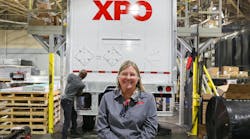Like virtually everyone in the trucking industry, new tire makers and retreaders have felt the effects of the global recession. For them, however, a troubled economy has not been the only thing disrupting business.
“The whole tire industry has been on an 18-month roller-coaster ride, both new tires and retreads,” notes Jay Hofner, general manager, commercial retread for The Goodyear Tire & Rubber Co. “Scarcity and price volatility have been big issues with both natural and synthetic rubber. Prices are going up, due in large part to the big growth in demand in other parts of the world. Some suppliers are starting to form an OPEC of sorts for natural rubber [the Association of Natural Rubber Producing Countries, or ANRPC], just as there is for oil.”
Volatile crude oil prices have also impacted the cost of synthetic rubber, he adds. “Fuel is a triple whammy for the tire industry,” Hofner says. “We use it to make tires and retreads; it takes fuel to deliver our products; and our customers are also spending more of their money for fuel.” Still, he is “definitely seeing a little stability return” to the market and hopes for improvements in the year-over-year numbers in 2010.
Tom Trego, channel manager, distribution for Bridgestone Bandag, says he is also seeing rising materials costs. In fact, the company announced a price increase of up to 6% on its retread materials effective May 1, as well as similar increases for its new Firestone and Dayton truck and bus radial tires. The rise was just the latest in a series of price increases on the part of most of the major tire and retread suppliers.
Like Hofner, however, Trego sees business improving. “Fleets seem right on the cusp about hiring new drivers and starting up equipment that has been parked,” he observes. “Business is beginning to pick up.”
Steady cost increases are inevitable in the short term, according to tire expert Kevin Rohlwing. He noted in his February 2010 “Tire Tracks” column that, although ANRPC reports that rubber tree plantings rose dramatically in 2005-08 with the goal of stabilizing rubber supply in 2014, it will take six to seven years for those trees to become productive. As a result, between now and 2014 “fleets must be prepared for future price increases as unstable natural rubber production and crude oil costs continue to have a negative effect on the tire manufacturing and retread industries.” Climate change and political instability could also have disruptive market effects, Rohlwing predicts.
It is no wonder then that the demand for retreads has grown persistently over the years to help fleets get more life from the casings they already own versus starting over again with a new tire every time. “To all of us, retreading is recycling,” observes Trego. “Most of the largest fleets [do retreading] today and they would not do it if it wasn't safe and didn't make good financial sense.”


